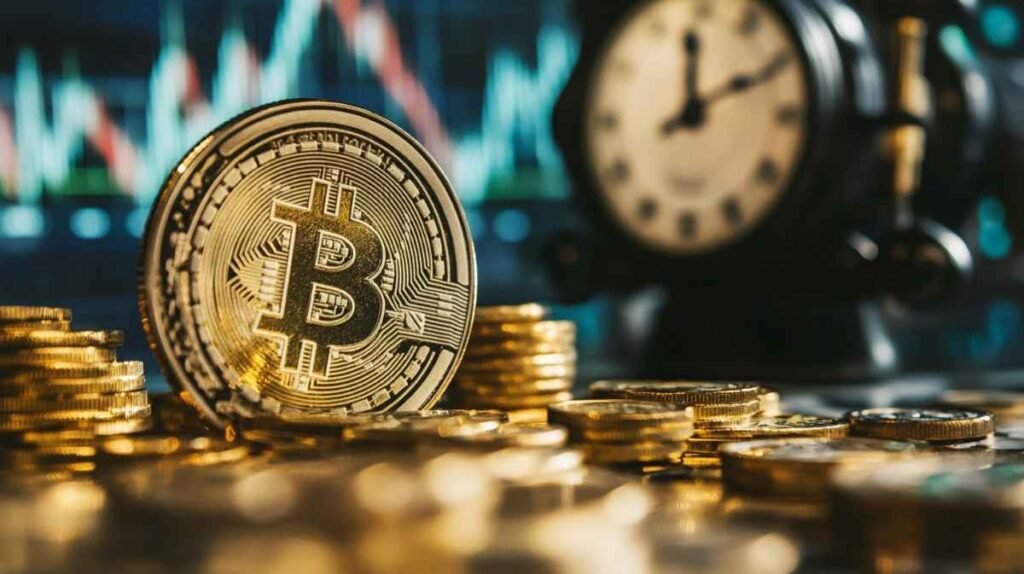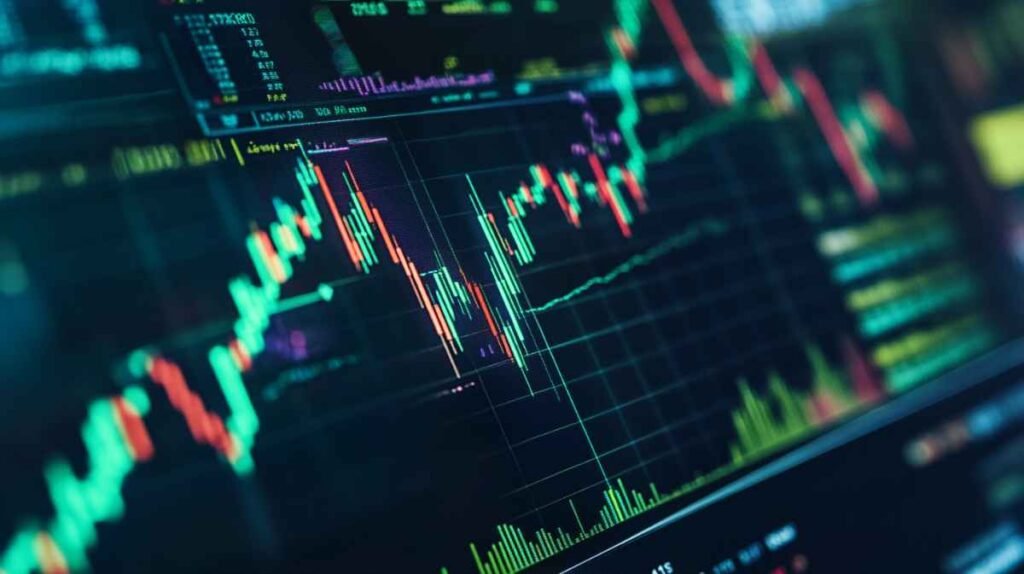
Cryptocurrency markets operate 24/7, allowing traders to buy and sell digital assets at any time. Unlike traditional stock markets, which have fixed trading hours, crypto trading continues without interruption.
While this flexibility offers convenience, it also introduces challenges in identifying the best times to trade for maximum profit.
Why does timing matter in crypto trading? The answer lies in trading volume, volatility, and liquidity—three key factors that influence price movements.
Trading volume refers to the number of transactions occurring in a given period, while liquidity determines how easily assets can be bought or sold without major price shifts. Volatility, on the other hand, measures how much prices fluctuate within a specific timeframe.
These elements are not constant throughout the day. Instead, they fluctuate based on different global time zones. Since the crypto market is global, activity levels vary depending on when major financial hubs—such as London, New York, and Asia—are open.
In Europe, trading hours align with the London financial session, which is one of the most active periods for crypto transactions. Additionally, when European and U.S. market hours overlap, trading volume and price movements tend to surge, creating prime opportunities for traders.
Understanding these patterns can help traders optimize their strategies, enter trades during high-liquidity periods, and avoid low-activity hours when price manipulation is more likely.
How Cryptocurrency Trading Hours Work Globally
Since cryptocurrency is a global market, different time zones play a crucial role in determining when the highest number of traders are active. Market activity is usually higher when major financial hubs are open, as institutional traders, retail investors, and market makers execute trades.
Conversely, during off-peak hours, trading volumes decrease, which can lead to lower liquidity and higher price manipulation risks.

The Influence of Major Financial Hubs
The three major financial hubs that impact cryptocurrency trading volumes are:
- Asian Session (Tokyo, Hong Kong, Singapore) – 00:00 to 08:00 GMT
- Activity is dominated by traders in Japan, South Korea, China, and Singapore.
- High-volume trading for Asian-based cryptocurrencies like Bitcoin, Ethereum, and Asian altcoins.
- Moderate volatility, with some market movement but less than during the U.S. and European sessions.
- European Session (London, Frankfurt) – 07:00 to 16:00 GMT
- London is a global financial powerhouse, influencing crypto trading significantly.
- Liquidity increases as European institutions and traders join the market.
- This session overlaps with both the Asian close and the U.S. open, creating higher volatility.
- U.S. Session (New York, Chicago) – 13:00 to 21:00 GMT
- The most volatile session, as major institutional players and hedge funds operate.
- Bitcoin and Ethereum trading volumes peak, driven by Wall Street activity.
- The overlap with European markets (13:00–16:00 GMT) leads to sharp price movements.
Why Overlapping Sessions Matter
Some of the most significant market movements occur when sessions overlap, as liquidity and volatility increase:
- Europe & Asia Overlap (07:00–09:00 GMT): Moderate trading volume as Asian traders exit and European traders enter.
- Europe & U.S. Overlap (13:00–16:00 GMT): The highest volatility period, as European and American traders are active simultaneously.
The Role of European Market Hours in Crypto Trading
The European market hours play a crucial role in cryptocurrency trading, influencing liquidity, volatility, and price movements. Europe is home to major financial hubs, with London and Frankfurt serving as key centers for institutional and retail trading.
The presence of banks, hedge funds, and large investment firms during these hours adds significant volume to the crypto market.

London Session (08:00–16:00 GMT) – The Liquidity Engine
The London trading session is one of the most important periods for crypto markets, as it coincides with high activity in both European and global financial markets. When London opens:
- Liquidity surges as institutional investors, hedge funds, and traders enter the market.
- Volatility increases, offering traders opportunities to capitalize on price swings.
- Trading pairs involving the Euro (EUR) and British Pound (GBP) see higher activity, influencing Bitcoin (BTC), Ethereum (ETH), and other major cryptocurrencies.
- The overlap with the Asian session (07:00–09:00 GMT) creates a transition period, where liquidity begins increasing before hitting peak levels later in the session.
Due to London’s dominance in global forex and financial markets, crypto trading benefits from the increased activity of high-volume traders during this time.
The U.S. Market Effect on European Crypto Trading
The U.S. market has a major influence on European crypto trading, especially during the overlap period between European and U.S. trading hours (13:00–16:00 GMT).
During this window, both institutional and retail traders from Europe and North America are actively executing trades, leading to increased liquidity, higher volatility, and stronger price movements in major cryptocurrencies like Bitcoin (BTC) and Ethereum (ETH).
Why the 13:00–16:00 GMT Overlap Is Crucial
- Liquidity Surges: The entry of U.S. traders adds significant buying and selling activity.
- Stronger Price Movements: Large institutional orders from hedge funds and Wall Street firms drive short-term price fluctuations.
- Higher Trade Execution Volumes: More market participants reduce slippage, leading to better trade execution.
This overlap is often one of the most profitable timeframes for crypto traders, as price swings create high-risk, high-reward opportunities.
The Impact of the U.S. Stock Market Open (14:30 GMT) on Crypto Volatility
One of the most critical moments in the trading day is the U.S. stock market opening at 14:30 GMT. Since crypto markets often move in correlation with traditional financial markets, the opening of Wall Street (New York Stock Exchange and Nasdaq) brings:
- A spike in Bitcoin trading volume as institutional investors adjust their portfolios.
- High volatility, particularly for BTC, ETH, and other large-cap cryptocurrencies.
- Market reaction to U.S. economic data such as inflation reports, job numbers, and Federal Reserve announcements.
For example, research has shown that Bitcoin’s trading volume peaks around the U.S. stock market open, particularly when there are major macroeconomic announcements that impact risk assets.
Best Trading Hours for Crypto Traders in Europe
Timing plays a crucial role in crypto trading success, and European traders benefit from two key trading windows that offer the best liquidity, price efficiency, and volatility:
- Morning Session (07:00–09:00 GMT) – When Frankfurt and London financial markets open.
- Afternoon Session (13:00–16:00 GMT) – When European and U.S. trading hours overlap, leading to peak market activity.
These periods are ideal for both day traders and swing traders looking for strong market movement and tight spreads.
Morning Hours (07:00–09:00 GMT): The Early Liquidity Surge
The early European session is an important phase for crypto traders. This is when:
- Frankfurt opens at 07:00 GMT, bringing initial liquidity into the market.
- London, the largest financial hub in Europe, opens at 08:00 GMT, further increasing market activity.
- European institutional investors start their trading day, leading to increased trading volumes.
- Price trends begin to form, making it a good time to spot early market direction.
Why Trade During This Window?
- Higher liquidity means orders execute with minimal slippage.
- More predictable price movements allow for strategic entry points.
- Market reacts to overnight price action from Asia, helping traders catch potential trend shifts.
For European traders, this period provides strong liquidity and moderate volatility, making it an excellent time for placing trades with tighter spreads.
Afternoon Hours (13:00–16:00 GMT): Peak Trading Activity
This afternoon window is the most active and volatile period for crypto trading in Europe. It marks the overlap between the European and U.S. markets, driving up trading volume and liquidity.
- 13:00 GMT: U.S. traders begin their pre-market trading, increasing market participation.
- 14:30 GMT: The U.S. stock market opens, often triggering a surge in Bitcoin (BTC) and Ethereum (ETH) trading activity.
- 16:00 GMT: The European session closes, and the market momentum from the U.S. takes over.
Why Trade During This Window?
- High liquidity ensures smooth trade execution.
- Price volatility increases, leading to profitable trading opportunities.
- Institutional orders from both Europe and the U.S. influence market direction.
This period is particularly favorable for day traders, scalpers, and breakout traders, as it offers momentum-driven price movements and a higher chance of trend continuation or reversals.
Weekend Trading: A Different Dynamic
While cryptocurrency markets operate 24/7, weekends present a different trading environment compared to weekdays. Lower trading volumes, reduced institutional participation, and unpredictable price movements make weekend trading riskier for many traders, especially in Europe.

Why Does Crypto Trading Slow Down on Weekends?
During the week, institutional investors, hedge funds, and large trading firms contribute to a significant portion of crypto market activity. However, these key players reduce or halt trading on weekends, leading to:
- Lower trading volumes, making it harder to enter and exit trades efficiently.
- Wider bid-ask spreads, increasing transaction costs for traders.
- Less liquidity, causing price slippage on large orders.
Since retail traders dominate weekend activity, markets may react more erratically due to emotional trading and speculation.
Weekend Volatility and Price Anomalies
Despite lower volume, weekends can experience unexpected price spikes or crashes due to:
- Thin Order Books – With fewer active traders, a single large buy or sell order can cause abrupt price swings.
- Whale Manipulation – Large holders (whales) may exploit low liquidity to trigger stop-losses and hunt liquidity zones.
- Low Resistance Levels – Since market makers are less active, support and resistance levels can be broken more easily.
These conditions can lead to “weekend pumps” or “flash crashes”, where prices suddenly surge or drop, only to correct when institutional traders return on Monday.
Should You Trade Crypto on Weekends?
While experienced traders can take advantage of weekend price inefficiencies, beginners should approach weekend trading with caution by:
- Reducing position sizes to minimize risk.
- Using limit orders instead of market orders to avoid slippage.
- Monitoring whale activity and liquidity zones before entering trades.
- Being mindful of Monday corrections, as prices often adjust when institutional traders return.
For most European traders, weekends are best suited for strategic planning, portfolio reviews, and setting up trades for the upcoming week, rather than engaging in high-risk speculative trading.
Conclusion
Timing plays a crucial role in crypto trading, and high-liquidity periods—especially during the London session and the Europe-U.S. overlap—offer the best trade execution, lower slippage, and increased market activity.
These windows provide traders with more predictable price movements and opportunities to capitalize on volatility without excessive risk from low-volume conditions. On the other hand, weekend trading comes with unique challenges, including low liquidity and potential price anomalies, making it riskier for inexperienced traders.
Traders should experiment with different time slots based on their strategy—whether they prefer steady price action in the morning or higher volatility during the U.S. overlap.
By aligning their trades with peak market hours and applying proper risk management, traders can optimize their results and avoid unnecessary losses. Understanding how global trading sessions impact the market is key to making informed and strategic trading decisions.



